Palm Tree Care
Myth: Cutting back a palm tree will make it grow faster.
Gardeners across Australia have been doing extensive palm tree pruning that doesn’t help it grow faster and can actually hurt the tree. Like any plant pruning, Palm Tree pruning must be undertaken carefully. We have some great tips for you to know how and when to prune your palm tree to make it stronger and healthier.
Covering Newcastle, Lake Macquarie, Cessnock, Hunter Valley, Port Stephens, Maitland.
Get a FREE Quote
We will get back to you as soon as possible.
Please try again later.
Save Time
Qualified Staff
Safety First
Friendly Advice
Trimming a Palm Tree
Some experts suggest you should avoid pruning Palm Trees completely.
However, most suggest you avoid cutting too much or too often.
So, when is the best time to prune your palm plants?
The Most Common Palm Trees
Palm trees are among the most iconic and recognisable plants in the world, known for their distinctive leaves and tropical appearance.
There are over 2,500 species of palm trees found in different parts of the world, and they come in various sizes, shapes, and colours.
Let's have a look at some of the most popular types of palm trees and their unique features.

Coconut Palm (Cocos nucifera)
The coconut palm is one of the most widely cultivated palm trees in the world, grown primarily for its delicious fruit and oil. This tall and slender tree can grow up to 30 metres in height, with long, feathery leaves that can reach up to 6 metres in length. It is a common sight in tropical regions and is known for its iconic appearance and cultural significance.
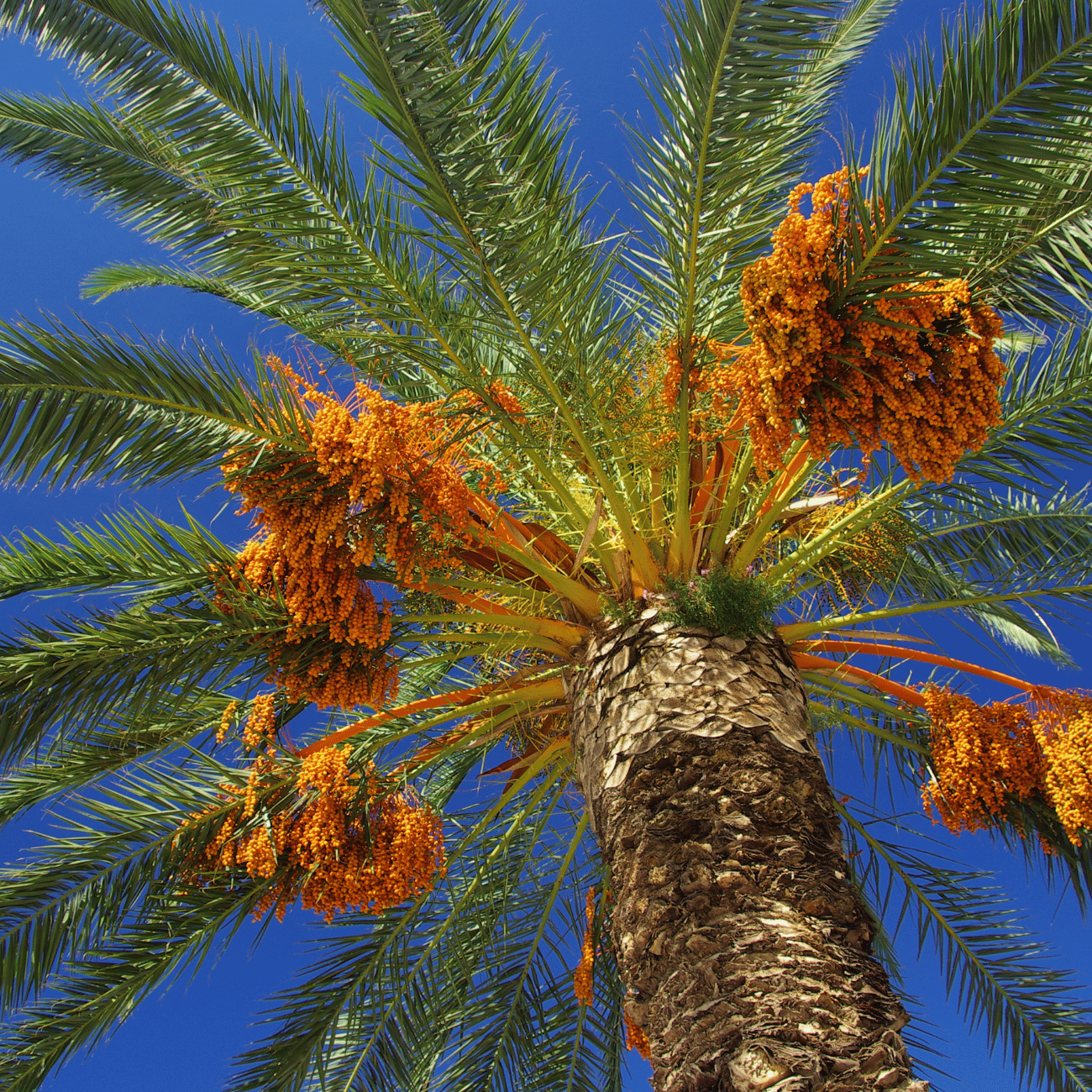
Date Palm (Phoenix dactylifera)
The date palm is another popular species of palm tree, known for its sweet and nutritious fruit. It is a slow-growing tree that can live up to 100 years and can grow up to 25 metres in height. The date palm has a stout trunk and long, slender leaves that can grow up to 5 metres in length. It is widely cultivated in the Middle East and North Africa and is an important source of food and income for many people in the region.
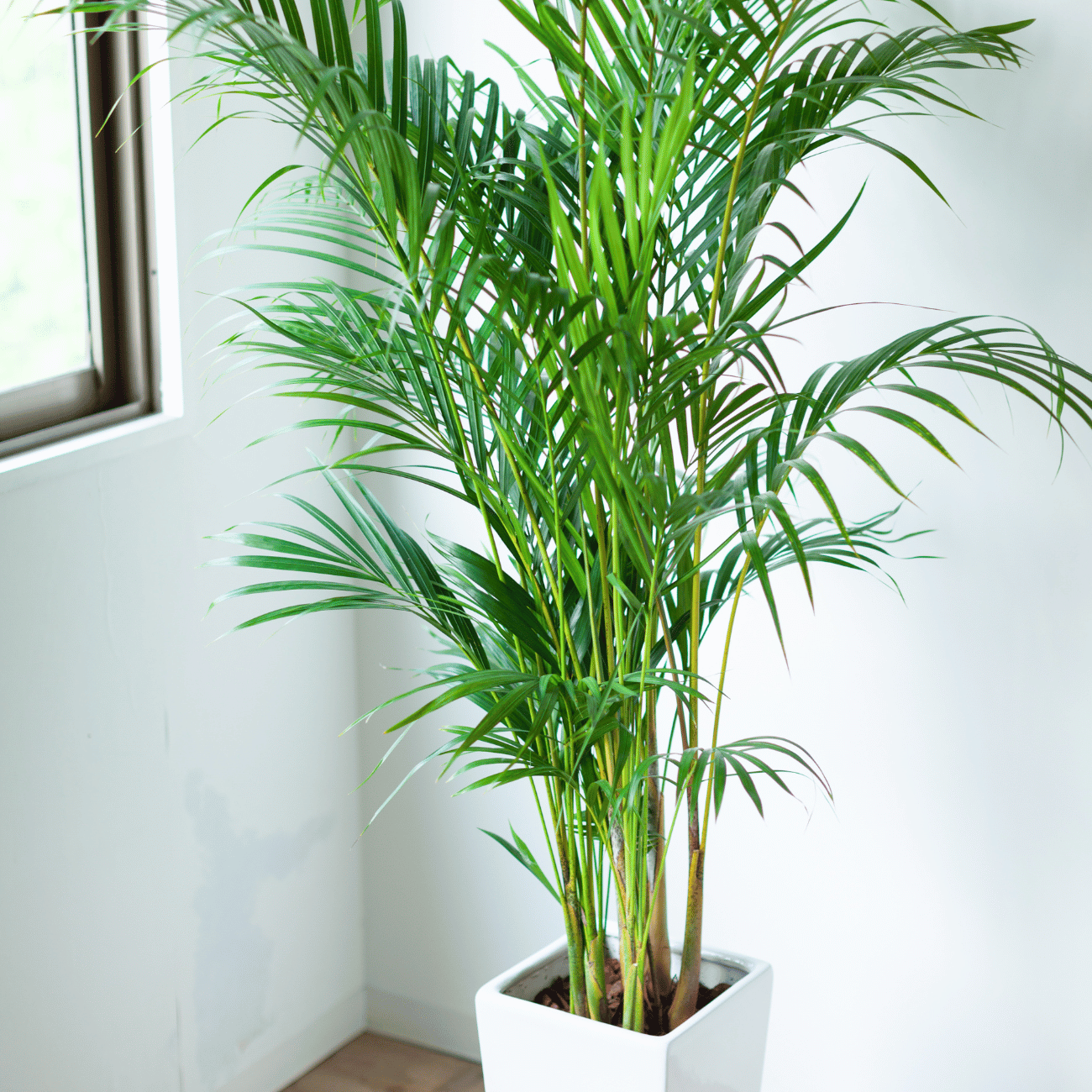
Areca Palm (Dypsis lutescens)
The Areca palm, also known as the Butterfly palm or Golden Cane palm, is a popular indoor plant that is known for its slender, golden stems and long, feather-like leaves. It is a small to medium-sized palm that can grow up to 6 metres in height and is commonly used as an ornamental plant in homes and offices.
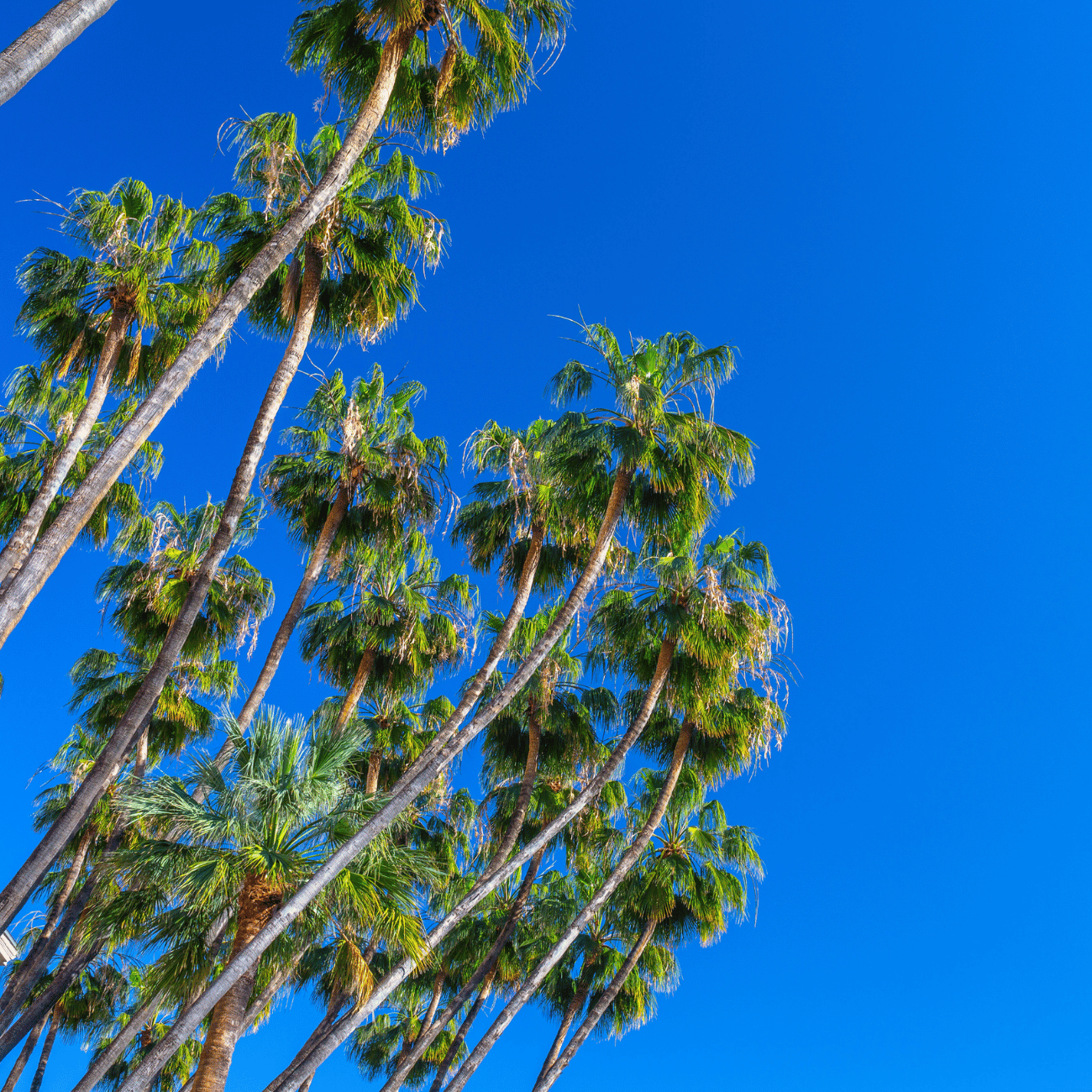
Mexican Fan Palm (Washingtonia robusta)
The Mexican Fan palm is a tall and stately palm tree that is commonly found in Southern California and other warm regions of the world. It has a slender trunk and large, fan-shaped leaves that can reach up to 2 metres in diameter.
It is a popular landscaping tree and is often used to line streets and boulevardes.
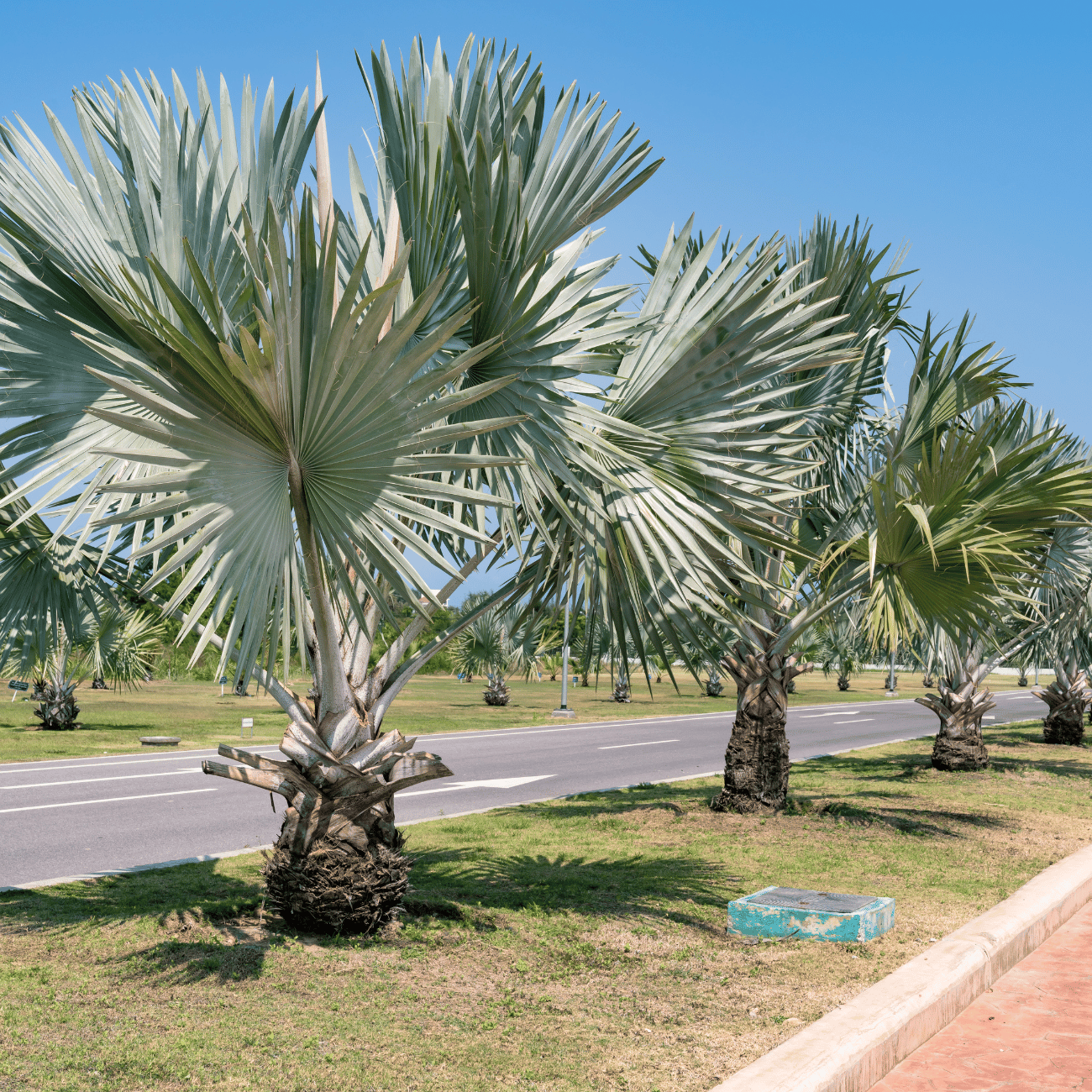
Bismarck Palm (Bismarckia nobilis)
The Bismarck palm is a large and striking palm tree that is native to Madagascar. It has a stout trunk and massive, blue-green leaves that can grow up to 3 metres in diameter. It is a slow-growing tree that can reach up to 20 metres in height and is often used as a statement tree in landscaping and garden design.

Queen Palm (Syagrus romanzoffiana)
The Queen palm is a graceful and elegant palm tree that is native to South America. It has a slender trunk and long, arching leaves that can reach up to 5 metres in length. It is a popular landscaping tree and is often used in tropical and subtropical regions as a shade tree or focal point in gardens and parks.

Fan Palm (Licuala grandis)
The Fan palm is a small and compact palm tree that is native to Southeast Asia. It has a slender trunk and circular, fan-shaped leaves that can reach up to 2 metres in diameter. It is a popular indoor plant and is often used as an ornamental plant in homes and offices.
Palm trees come in many different shapes, sizes, and colours, each with its unique features and characteristics. From the towering Coconut palm to the graceful Queen palm, these trees are not only aesthetically pleasing but also have cultural, economic, and environmental significance.
Whether you're looking to add a touch of tropical flair to your garden or want to enjoy the health benefits of coconut water, palm trees have something for everyone.
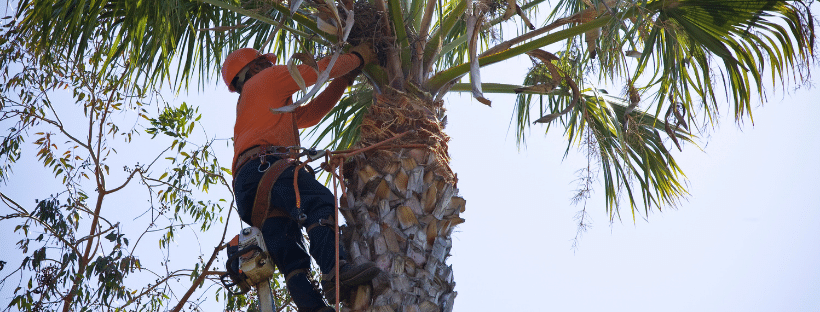
Can I Remove a Large Palm Tree Myself?
NO! Removing Palm Trees is dangerous work and requires expert and experienced professionals.
Chainsaws can be hired hire, however those available to hire by homeowners are usually much smaller and less powerful than those used by professionals, so may not be suitable for your job.
Why put yourself or your family at risk to save a 'few bucks'!
Why Should I Hire A Professional Arborist?
Large Palm Tree removal is very dangerous.
If you don’t know what you’re doing things can go wrong very quickly. You can you put yourself, your family, your house and your neighbour’s houses at risk.
If you don’t have the right equipment and a team of experienced people, doing it yourself is a very poor decision.
Do you really want to take the chance?
The only smart option is to hire a professional, experienced Arborist who will safely remove the Palm tree safely for you. They will also safely clear and remove all of the debris which remains.
The other major reason for hiring a professional tree service is they can quickly remove the stump after the tree has been removed. Most companies, including
Kaptol Tree Removal Newcastle use a specialist piece of equipment called a
stump grinder which removes the palm stump without trace.

What are the Risks of Trimming a Palm Tree?
There are several risks associated with trimming a palm tree, including:
- Physical injury: Trimming a palm tree can be physically demanding, and there is a risk of falling or being struck by falling branches. It is important to use proper safety equipment and follow proper safety procedures when trimming a palm tree.
- Damage to the tree: Improper trimming techniques can damage the tree, leading to reduced growth and even death. It is important to trim palm trees correctly to avoid damaging them.
- Legal liability: If the palm tree is on someone else's property and you trim it without permission, you could be held legally liable for any damage that occurs. It is important to obtain permission before trimming a palm tree on someone else's property.
- Damage to property: If the palm tree is not trimmed correctly, there is a risk of falling branches damaging nearby property. It is important to take proper precautions to prevent damage to surrounding property.
In general, it is best to hire a
professional tree service to trim a palm tree, as they have the necessary equipment and expertise to do the job safely and correctly.
How and When to Prune a Palm Tree.
Experts recommend Spring is the best time to prune your palm tree.
Those dead or dying fronds may be unattractive, but they form protection from the heat of summer and winter’s cold.
To trim your palm tree correctly and efficiently you will need pruners, garden knives, and pruning saws.
For your safety, ensure you wear safety glasses and protective gloves, as well as heavy pants and a shirt with long sleeves.
Start by removing any hanging, dead or unhealthy fronds. Any dry, wilted, or diseased fronds should also be removed.
Palm trees are different from other trees in that when you are pruning palm plants, you don’t need to prune green, healthy fronds. There is no biological reason to do so and it can stress the tree. Be sure not to remove green fronds growing horizontally or pointing up.
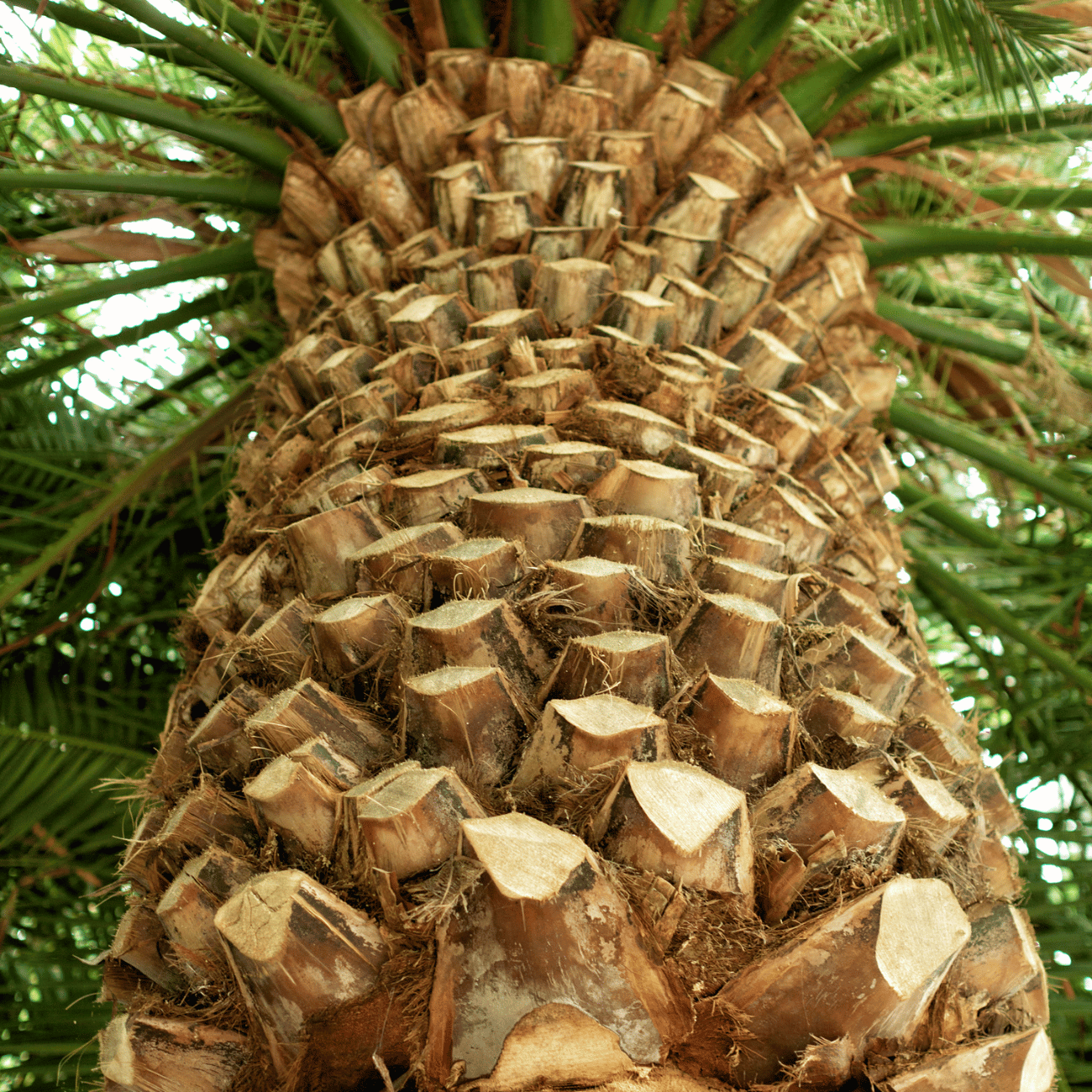
Canary Island Palm
The Canary Island date palm (Phoenix canariensis) is a species of palm tree that is native to the Canary Islands, a Spanish archipelago located off the coast of Africa.
It is also commonly known as the Canary palm or Pineapple palm.
This palm tree is highly valued for its ornamental qualities and is popular in landscaping and gardening projects around the world. It can grow up to 20 metres in height and has a thick, stout trunk that can reach up to 1 metre in diameter.
The leaves of the Canary Island date palm are long, feathery, and bright green, with sharp spines at the base of each leaf stem.
One of the distinctive features of the Canary Island date palm is its large, spherical fruits, which are orange-yellow when ripe and about the size of a golf ball. These fruits contain a single large seed that can be used to propagate new plants.
The Canary Island date palm is a hardy and drought-tolerant tree that can thrive in a variety of soil types and growing conditions. It is often used in landscaping projects to create a tropical or Mediterranean look, and its large size and dramatic appearance make it a popular choice for public spaces such as parks, golf courses, and botanical gardens.
The Canary Island date palm is a beautiful and iconic palm tree that has become a beloved feature of many landscapes around the world.
Are date palm seeds poisonous to dogs?
Yes, date palm seeds are toxic to dogs.
The seeds of the date palm contain a substance called cycasin, which can cause liver damage in dogs if ingested in large quantities. Symptoms of cycasin poisoning in dogs include vomiting, diarrhea, loss of appetite, lethargy, abdominal pain, and jaundice.
It's important to keep date palm seeds and any other potentially toxic plants out of reach of your dog.
If you suspect your dog has ingested date palm seeds or is showing any signs of poisoning, seek veterinary care immediately. Your veterinarian may induce vomiting or provide supportive care such as fluids and medication to help manage symptoms and prevent further damage.
Contact
Kaptol Tree Removal Newcastle
A Member of the Kaptol Group
Powered by Kaptol Media
